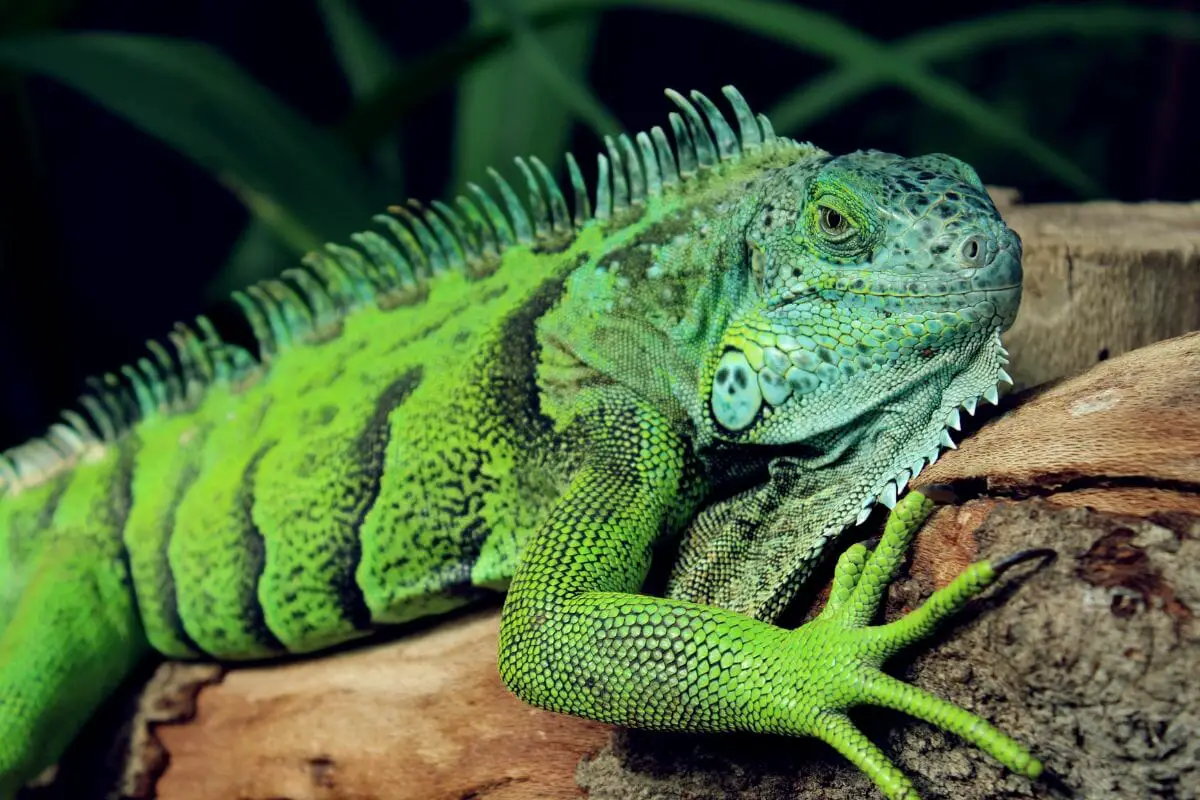Iguana are interesting creatures. Inhabiting diverse habitats, they are incredibly large herbivorous lizards that exist in Central and South America, as well as Mexico, with species like the spiny-tailed iguana, and have spectacularly adapted to the ever-changing environments of all these places.
From the dense jungles of Costa Rica, home to the fiji banded iguana, to the deserts of Central Mexico, to even the small islands of the Caribbean, which shelter the Cuban rock iguana, iguanas have thrived and adapted to diverse environments.

However, not many people know there are actually a few different types of iguana, each with their own unique skills and homes, but each definitely one of these ancient and strange lizards.
Therefore, we have decided to explore and enlighten you about the different iguana species, such as the Cuban rock iguana and spiny-tailed iguana, with their unique traits and habitats.
Extant Species
There are a few different species of iguana on the planet today that exist in very different environments from one another.
Despite these animals being discovered in the ‘New World’ of the Americas, iguanas, including the rhinoceros iguana and other iguana species, are from one of the oldest families of lizards on the planet.
The Green Iguana
The green iguana is the most common type of iguana in the world and one of the most adaptable among various iguana species.
Originally, this iguana species had a range throughout South and Central America, but it has successfully established itself on the Caribbean Islands, like the Cuban rock iguana, and even in the United States.
Indeed, it’s so common that people have started to refer to the green iguana, one of the 10 types of iguanas, as ‘gallina de palo’ or the tree chicken.
Generally measuring between 5 and 6 feet long, the spiny-tailed iguana for instance, too has quite a calm disposition. The Green Iguana is noted for the spines on its back and the dewlap under its chin.
If frightened by a predator, it will either run or dive into a body of water and swim away quickly, which is an adaptation that probably from evolving in a rainforest with a huge river basin.
The Galápagos Marine Iguana
Probably the most unique modern lizard and, sadly, one of the last marine reptiles, Marine Iguanas, among other iguana species, are only found on the remote Galápagos Islands off the coast of Ecuador.
These animals, like the Galapagos marine iguana, reside on the rocky outcrops of the islands and dive into the ocean to forage for algae in the water.
While iguana species like the Galapagos marine iguana mainly stay in the relatively shallow water of the island, their ability to feed consistently underwater is limited.
They can hold their breath for 15 to 30 minutes, but they don’t make their own body heat, so they must come to the surface in order not to freeze.
As such, they will spend the majority of their day heating up their bodies, diving for algae, before coming back to the shore and heating their bodies again by basking in the sunlight.
The difficult terrain, typical habitat for a Cuban rock iguana, means that the predators will have a hard time getting to them so it generally remains safe.
These iguanas, including the marine Galapagos species, take in a lot of salt compared to their counterparts, like the Cuban rock iguana or the spiny-tailed iguana, and they have adapted the natural exocrine glands in their nostrils to excrete this salt through sneezing, just like whales and dolphins.
The Desert Iguana
These Iguanas are only found in two connecting deserts, that of the Mojave and Sonoran Desert. What makes this so interesting is that these two deserts constitute some of the most inhospitable and barren landscapes on earth.
Very few medium, let alone large creatures exist in these places, but these lizards thrive here. When other creatures have retreated into the shade or their burrows, these animals are out and about searching for food.
They can withstand temperatures up to the mid 40 degrees Celsius (or about 110 Fahrenheit).
Once their body temperature gets to the mid 40s themselves, they will seek a burrow or a hiding spot to cool off and rest.
These animals are primarily herbivorous, but are also opportunistic and will take anything they can get their claws around to survive.

Rock Iguanas
These Iguanas are actually a large family of Iguanas, but are split into a family of 10 different subspecies.
Each subspecies of iguana is endemic to an island in the Caribbean, with the subspecies coming about because the islands have been separated for millions of years and so the iguanas evolved along a different evolutionary path.
As such, we will take a look at the most interesting of these Iguanas: The Grand Cayman Blue Iguana.
The Grand Cayman Blue Iguana
These Iguanas exist solely on the island of Grand Cayman in the Cayman Islands.
These iguanas are the largest living land animal that live on the island, being about 5 foot long and weighing about 14 kilograms, and probably the largest lizard in the western hemisphere.
They gain their name for their distinctive blue color that has touches of green on it as well, an exceedingly rare color scheme that is normally naturally found in birds.
Another thing to note is that these iguanas may be one of the oldest living lizards, with a specimen recorded as living up to 69 years of age.
Fijian Banded Iguana
The only group of Iguanas that do not exist or are not native to the Americas are the Fijian/Tongan Iguanas, with the most well-known being the Fijian banded Iguana.
These lizards only exist on the Fijian islands in tropical wet forests.
They are by far the most geographically isolated of the iguanas, and scientists are still trying to figure out just how these lizards even got to Fiji.
They are much smaller than their cousins – at just over 2 feet long – and live for a much shorter time, just over 15 years, but these adaptations are necessary to island living and have made them incredibly successful, even to this day.
Conclusion
There are many different types of Iguana in the world currently with many different adaptations to surviving where they live, making iguanas one of the most successful lizard families, to the point where they are considered an invasive species in some areas.
However, this does not detract from a fascinating creature such as these. The world of iguanas encompasses various species like the Green Iguana, Cuban Rock Iguana, and Marine Iguana. Ranging from arid deserts to tropical locales like the Fiji Islands, these herbivorous reptiles exhibit unique adaptations.
Some, like the Rhinoceros Iguana, face endangerment due to habitat loss. Their omnivorous diet includes insects and vegetation. Their distinctive features, such as the dewlap and spiny tails, make them popular pets, though their conservation remains critical for their survival amidst environmental threats.








